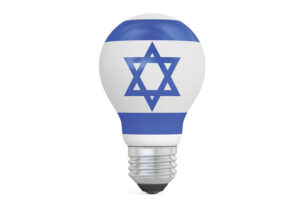Science is what distinguishes the state of ignorance or misunderstanding and the state of discerning with a well-organized knowledge that is continuously broadened. Science is focused on making discoveries, investigating hidden phenomena by making unknowns (“X”) invariably a priority. Today’s academia endlessly undecided on the assessment of the status and reliability of a source. The fact that the source was peer-reviewed and/or produced by a long-established publisher certainly cannot be a single criterion in the evaluation. Most commonly, researchers challenged with three central predicaments while managing sources. This writing introduces the hierarchical classification and arrangement of sources and provides arguments for the status of each and enables differentiating scientific work from the journalistic product.
The first dilemma scientists are faced with is related solely to sources, in case the subject was not well researched before it becomes even more problematic. Secondly, most of the sources are “scattered” on the timeline and do not always reflect the evolution of science. In contrast, very often they may reflect the degradation of science. Thirdly, evaluation of the source rank amidst all other sources in the given field; typically, the “closer” is the content of the source to the accuracy and authenticity, the higher it’s standing and vice versa (the “further” away it is from the truth, the less reliable it is). I believe this classification will become a guide for scientists that have struggled with source-related issues as I did for many years.

Classification and source ranking
1) Compound multidimensional (interdisciplinary) source
It has to correspond to three characteristics: a compound multidimensional source has to have scientific, practical, experimental and application-oriented constituents.
Let’s suppose that the subject of our research is fencing. An example of the compound multidimensional source, in this case, would be a treatise by Jeronimo de Carranza The Philosophy of Arms (De la Filosofía de las Armas y de su Destreza y la Aggression y Defensa Cristiana, 1582). Jeronimo de Carranza was the founding father of Spanish fencing, a key figure in the field authored a manuscript which meets three aforementioned characteristics:
1) The Philosophy of Arms is written at the intersection of several sciences
2) It includes practical aspects with examples
3) It has experimental constituents that are outlined and demonstrated.
If to consider the author himself, he is unambiguously an authority figure of Spanish Fencing, who was the perfect representation of nobility as he had acquired the highest status a noble could have had at those times. For his services to the Spanish crown, he was appointed as a commander of the Order of the Image of Christ. Certainly, not all areas of research would have sources like The Philosophy of Arms.
2) Application-oriented scientific source
This kind of source is application-oriented, it is scientific but does not have a practical constituent.
Example: Irrefutable sources such as photographs, architecture, terrain, etc.
3) Practical interdisciplinary primary source
It covers one narrow issue
Examples: Electric engineering manual
4) Scientific-theoretical source/popular science
This source is listed fourth for the reason that every scientific theorization demands practical experiments. This kind of source should have the research model and the results of it. But as a rule, these types of sources do not entail results in practice. If there is no evidence and record that the author of the source applied it in practice, it is assumed that the source requires verification, although it is a long-established one.
5) Publicistic work/firsthand-experience
Typically, this type of source has a practical side without a theoretical one. It is a firsthand-experience work based on one’s personal experience (travelers book, diaries). (Peter authors a book about 30 years spent in the Antarctic; the book outlines his personal experience and practice without a theory)
6) Analytical publicistic work
Narrative of a person on a specific subject, work of an enthusiast who spent a remarkable amount of time investigating and exploring data. The source itself requires verification and cannot be considered to be a highly reliable source as it does not have a scientific constituent. It is an attempt at systematization and analysis based on one’s own experience and perception. An example of such a source would be a book of how one searched the Amber Chamber for decades.
7) Archival data
Privately-owned data and state archives.
This is a weakly structured material. At first sight, it may seem that state archives are of tremendous significance, and yet that is not always the case. First, you face the bulk of diverse disorderly data that needs time-consuming, thorough analysis. Second, one compilation of records might entirely repudiate the other one, let alone having access to complete on a subject (many records are lost especially during war times). All in all, archival work is a rather time-consuming endeavor. Archival sources are weakly structured records that are troublesome to analyze and may take up decades to systematize them.
8) Journalistic works (books, articles)
Journalistic work tackles a narrow subject of interest, it is an expression of one’s own perspective, sometimes superficially.
9) Media materials
Articles, publications, documentations are a source of scientific information but not highly reliable ones.
10) Non-fiction and other literary genres
11) Unclassified, doubtful sources of information
Note: In some areas, there might be a deficit of sources and in cases as such, “any” source becomes a dependable one.

Structure and systematization
1. The classification presented before corresponds to historical requirements; it allows you to classify any kind of source regardless of its publication date.
2. This classification comes directly from the methodology of science. It is systematized based on the principle of studying the problematique and verification of results in practice.
3. Parameters of the source to consider:
a) author. His research interests and main activity might tell a lot in relation to practical and application-oriented constituents.
b) scientific component. The source has to demonstrate uncontroversial interdisciplinary research. Research in the frameworks of one science signifies that it is a scientific-theoretical work and not a compound multidimensional (interdisciplinary) source.
c) experimental and application-oriented component. Its main characteristics are examples and demonstrations.

Scientific research primarily uses scientific apparatus, methodologies, and research toolkit.
The approach, presented here, allows any researcher to rank sources as fast and easy as possible.
Classification of sources gives an understanding of the foundation and credibility of our research. If the research is conducted on fallacious data, an outcome would be even more invalid. Secondly, this classification allows us to decide for ourselves what kind of work one would like to create. This tool can be also used to describe the formation of a scientist. Let’s suppose that one decides to start from a publicist work based on his own experience in the Antarctic. He writes his book just like Miklouho-Maclay did based on his experience Travels to New Guinea. The next step in becoming a scientist would be developing theoretical works, followed by application-oriented scientific works and compound interdisciplinary sources. It is a simple timeline of the scientist’s progress. The scientist’s status is determined according to works that he or she can produce. A young researcher would start with personal-experience publisticism. Later on, he works under the guidance of a scientific supervisor on scientific theoretical works and compound multidisciplinary work, which signifies his independent research period of becoming an academician. Thus, it is never about the status, but the work itself, and the status comes as an addition. The upper part of the scheme is scientific work and journalistic is beneath. Certainly, this classification as any other thing in science could be discussed. Somebody might dispute presented classification and present his own as an alternative.
Miscellaneous
How to classify scientific articles? After analyzing the content of the article, we should determine if it has a scientific-theoretical source or if it was written based on personal experience. Scientific articles cannot exceed the scope of two (theory and firsthand experience), otherwise, it would become a monograph due to its volume. The scientific or scientific-popular article is a theoretical source or a publicistic source based on one’s own experience. Some scholars might argue on the rank of scientific and scientific-popular articles, the problem is that scientific articles are understandable by some academic circles and are not read widely by the general public. I would not say that a scientific-popular article ranks lower just because it is written in a way that’s understandable by wider audiences. In one way or another scholars willingly or unwillingly are “interested” in citation databases (which personally, I think, stray away from what real science is, in the pursuit of getting the article published bonded by the list of requirements). If one had to counter-intuitively compare two articles published in the Q1 journal, which is indexed in the Scopus search, and two scientific-popular articles published in media, which ones would be more reliable and higher ranking? Certainly, most people would probably say articles published in a Q1 ranked journal in Scopus, but here is the question: how many people read that article, except ones who reviewed it? Scientific-popular articles might be read by millions and even create a “name” for a young researcher. Speculation in this vein obviously is endless — at the end of the day, it is a personal choice of where the work should be published. Personally, I believe that we should not forget about what science is truly about and not completely sink in the virtual world of citations, references and databases in the pursuit of conforming to the “commonly accepted regulations”. Even if a scientist has hundreds of articles in journals, it does not mean anything yet; every journal has its own requirements which might not be doing good for the academic research itself. What if all databases are repealed, what’s next?
The indexation of a work must not be correlated with the quality of the work itself.
Founding contributors to the science of today — like Aquinas, Socrates, Aristotle, Plato, Confucius, Descartes, Foucault, Hume, Kant, Kierkegaard, Machiavelli, Marx, Nietzsche, Rousseau, Sartre, Wittgenstein, Spinoza, and many others — lived in different times and had much different approaches than that of today. Are we more influential, enlightening, revolutionary today than they were? Certainly not. But the works they left for us are highly valued, used by billions, and are considered to be an authoritative and reliable source for the reason they are immanent. Sources that were relevant yesterday but are not today, logically cannot be considered reliable ones.
To conclude, this piece introduced a classification that makes it possible to have a clear understanding of sources used in the research and what kind of work would one get in the end. I believe, for many, this classification may save time and make the systematization of sources easier. Secondly, it is a guide to see the path of a young researcher to an academician. Thirdly, it makes it easier to differentiate scientific work from a journalistic one. This classification is as objective as possible. Initially, the task I set before myself was to take into account all parameters while providing an unbiased assessment of the reliability of a source. The classification takes into account an academic career path of a scientist and research activity 0f a journalist, along practical professional and academic approach taking into account the exhaustive number of scientific and journalistic genres and all types of possible sources. In addition, this classification pays due consideration to relevance and applicability of it regardless of the time period of a source (one may use presented classification to assess ancient manuscripts just like brand-new papers published in the 21st century). Every source is a product of the intellectual activity of a person which corresponds to the “evolutionary stage” of a thinker. Novice journalists won’t be capable of writing a compound interdisciplinary source in one day. Naturally, professional, intellectual growth comes first and the product of work comes later on as an auxiliary and not the other way around. The main level where one operates makes it impossible to produce a work of a higher level without relevant skill. This is another reason why this classification is as accurate as possible in present circumstances.




